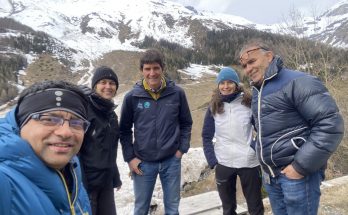Rockfalls and mass movements in the Mont Blanc Massif (MBM) are increasing due to climate change and can affect humans, mountaineering routes, infrastructures, and nearby villages. Monitoring high mountain rock face is often challenging, and remote techniques can help detect hazards relatively more easily and safely.
In this thesis, I focused on the Brenva rock spur. Lidar campaigns were done in the fall of 2020 and 2021 to obtain 3D models of the rock face and monitor rockfall activity during one year. Few small rockfalls (10-30 m3) were observed, highlighting that collapse activity has decreased in recent years.
The three-dimensional model of the rock wall was also used as an input for the structural analysis of the Brenva Spur, using Coltop3D software. Similarly, this type of analysis was done for the Grand Pilier d’Angle, located south of the Brenva, and for six lower-elevation granite outcrops in Val Veny. The analysis showed that the families of discontinuities characterizing the Brenva Spur are also found in the granitic rock walls in the neighboring areas.
The signals of the TRIMBLE accelerometer installed directly on the Brenva spur and the high-resolution images taken by the GEO Surveyor instrument placed at a distance of about 6 km were used. During a period of a month and a half (from June 7 to July 26, 2018) three rockfalls were detected: for only one it was possible to observe the associated accelerometric signal, and a spectrogram was created to be able to understand the frequency content of each phase of the event.

